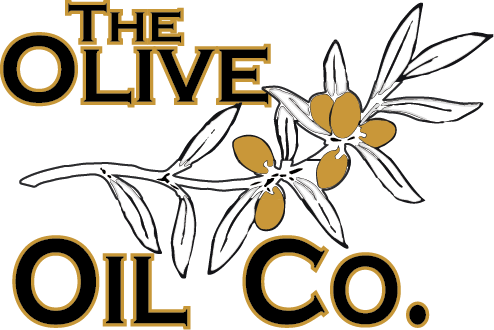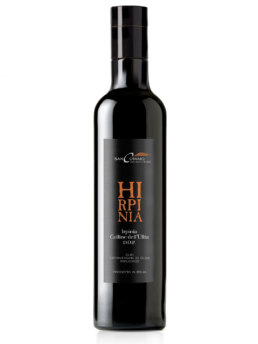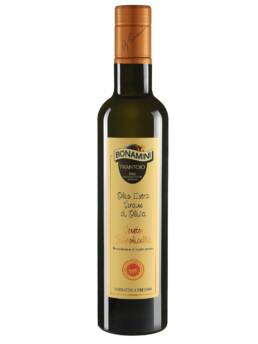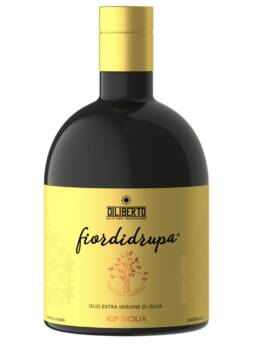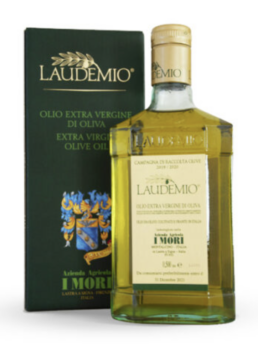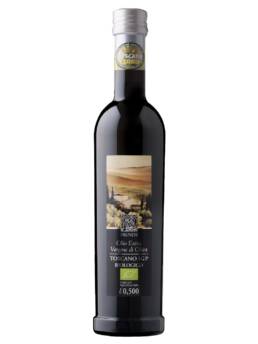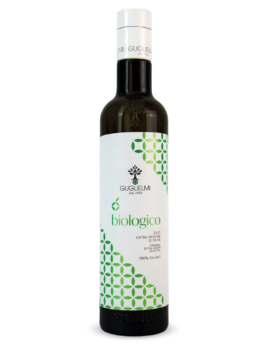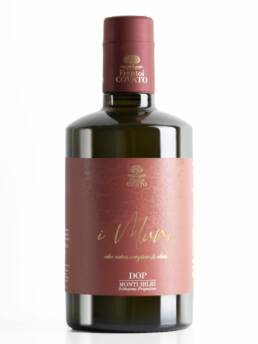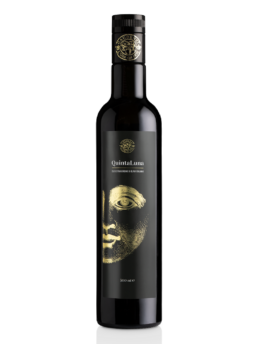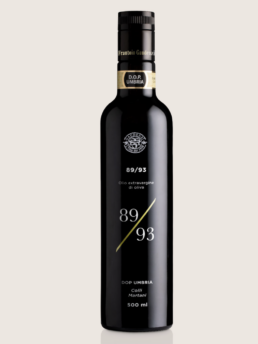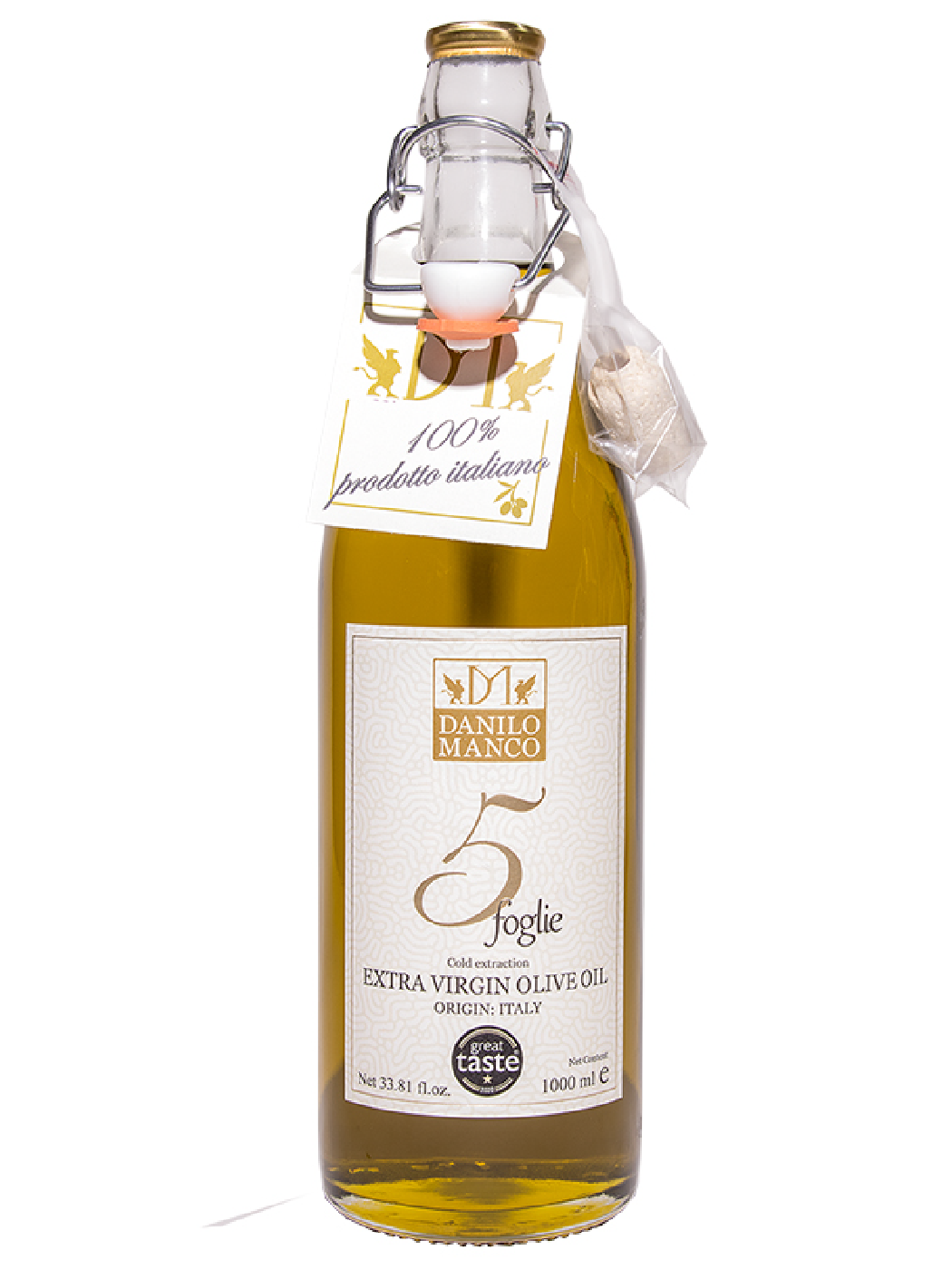
“CINQUE FOGLIE” Strenght:intense Monocultivar
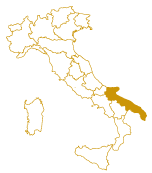

![]()
ORIGIN: Puglia
From: £12.50
DESCRIPTION: Lots of interesting aromas from this e.v.o.o. with warm toasted almond and hazelnut, a touch of woodiness, hedgerow, and rocket. It has a buttery, creamy mouth with plenty of rich nutty flavor that develops into something more peppery and lively. Well balanced but with a fairly short length. This is a good everyday oil for dressing and finishing fish.
COLOUR: Light green
Acidity (At Origin): 0.20
CULTIVAR: Ogliarola
INTENSITY: Robust
TASTE: The peppery finish leaves a pleasing tingle at the back of the throat.
SCENT: The artichoke flavor is well-pronounced alongside green olives and tomato leaves.
PRESSING: Cold extraction
FILTERED
HARVEST: 2024/25
(£25.95 per 1lt)
BAG IN BOX: The bag-in-box container provides excellent protection to olive oil from both light and oxygen, as there is no headspace filled with air at any time during its use. Same size of the tin, better protection for your Evoo in 3lt and 5lt.
HONORS & AWARDS: Great taste 2006, 2011, 2014, 2017, 2020





Are you a trade customer? If you are a trade customer, please email us at trade@theoliveoilco.co.uk
This is a good everyday oil to use in dressings and for finishing fish.
LASAGNA (the Original version)

INGREDIENTS FOR A 20X30 CM PAN
Green egg lasagna sheets ½ lb (250 g)
Grana Padano DOP cheese 5 tbsp
Oregano to taste – (fresh)
FOR THE BÉCHAMEL SAUCE
Whole milk 4 cups (1 l)
Butter 7 tbsp (100 g)
Flour 00 2.6 cups (100 g)
Nutmeg to taste
Fine salt to taste
FOR THE SAUSAGE RAGU
Sausage 1 ¾ lb (800 g)
Tomato puree 7 oz (450 g)
Celery 1 stalk
Onions 1
Carrots 1
Red wine 1 glass
CINQUE FOGLIE Extra virgin olive oil to taste
Fine salt to taste
Black pepper to taste
To make the lasagne with sausage ragu, first peel the carrot, onion, and celery and chop them roughly. Add a couple of tablespoons of olive oil to a frying pan, then add the chopped vegetables and brown over high heat for at least 5 minutes. Meanwhile, take the sausage, make an incision in the skin and remove it carefully using your hands. Once the vegetables have turned golden brown, add the sausage to the pan, increase the heat, and break up the sausage using a wooden spoon. Let it brown for about 5 minutes. Then, pour in the red wine and simmer until it evaporates completely. Next, add the tomato puree, season with salt and pepper, and stir to combine. Cover the pan with a lid and cook for about 10 minutes. In the meantime, start making the béchamel sauce: Pour the milk into a saucepan, season with salt and add the nutmeg, then bring to a boil. Melt the butter in another small saucepan, then sprinkle in the flour, stirring quickly using a whisk. Next, add the hot milk and, stirring continuously, cook the béchamel until it has thickened. Once the ragu is ready, all you have to do is assemble the lasagne. Spread a little béchamel on the bottom of a 9×13 inch (20×30 cm) pan and arrange the lasagne sheets on top. Cover with the sausage ragu, another layer of béchamel, and a tablespoon of grated Grana Padano cheese. Repeat these steps another five times, alternating the direction of the lasagne sheets each time. Once you’ve put the final layer of pasta in place, cover with the remaining ragu sauce, béchamel, and Grana Padano. Bake in an oven preheated to 425°F (220°C) for 20 minutes, then switch to broil mode at the highest setting and cook for another 3 minutes. When the lasagne with sausage ragu is golden brown, take it out of the oven and let it rest for 15 minutes. Buon appetito
Shipping and Handling
Delivery charges are: £5 for orders of up to £25, £3.95 for orders up to £35, £2.95 for orders up to £45. Delivery is FREE for orders over £45 before transport and any Vat where applicable (for UK customers only excluding Islands, please contact us if you don’t live in this area). We do not Ship outside the UK.
UK Remote areas and offshores where extra fees apply
ROAD SERVICE OPTIONS
|
Scottish Highlands and Offshore Options
|
Delivery Schedule
We deliver Tuesday to Friday. Orders placed by 9am will be dispatched the same day and will be delivered by our approved courier to arrive within 48 hours. Please be aware that all packages MUST be signed for, checked first and cannot simply be left in a garage or porch.
Orders placed after 9 am will be dispatched the following day.
Back Orders
Because we use small suppliers and sell a lot of seasonal products, all goods featured on our website are subject to availability. We endeavour to keep the website updated but if a product you order should be unavailable you will be notified of this by phone or email and given the chance to choose an alternative item, cancel your order completely, or put it on back order to wait until it is in stock (we will ship your other items to you if you wish).
If we are unable to contact you we will go ahead and dispatch the rest of your order without the said item.

It all started in my early days thanks to my grandfather.
He loves olive tree like it was a “family member”.
I remember once when I was a kid and harvest arrived I used a wooden stick to get the olives off the branches as it was quicker with the result of him going mad at me and when asking the question “why?” the answer was simpler than I could think of, “now imagine that I will do the same on you, how would you feel?”
Very true “Nonno”, you never did that to me but what you have done is giving the passion that you had for the wonderful and ancient product.
Today I still look at the olives flowers during spring and at the actual olives during harvesting with the same emotion and little grin that I vividly remember your expression did.
Thank you “Nonno Pasqualino”
Danilo Manco
Add a review Cancel reply
In a cool, dry place. Protected from light, heat sources and unpleasant odors. Once opened, minimize exposure to air.
Best consumed within 18 months from the date of bottling.
Why does olive oil get cloudy and thick?
Probably at some point you’ve seen some white lumps in the olive oil you store at home, but you know why?
If you’re a long time olive oil user then it’s possible that at some point you’ve noticed white crystals in the olive oil you keep at home. But do you know what they are and why they are there?
To explain, let’s start by comparing the freezing process of olive oil and water:
Water is a homogeneous liquid made entirely of H2O (hydrogen and oxygen) molecules. Since it’s made of one type of molecule, all of its particles freeze at the same temperature: 0ºC (32º fahrenheit). As the temperature lowers, the movement of the water molecules becomes slower until the water reaches freezing temperature at 0ºC, at this point the molecules stop moving and the water freezes and becomes solid: ice.
A similar process takes places with olive oil, but olive oil is not a homogeneous liquid like water is. The difference is that olive oil is made of a few different molecules, called triglycerides, and each has its own freezing temperature. The freezing point of these different molecules ranges between 0ºC and 15ºC depending on the fatty acid composition. The colder the olive oil gets, the greater the number of molecules that will start solidifying. Cold temperatures is the reason some white crystals may appear in your bottle of olive oil, especially during winter months.
Does that mean the olive oil is not good to use?
Not at all! The olive is perfectly fine without causing any nutrient loss. The freezing process is perfectly natural and has no impact on the quality of the olive oil.
In colder homes and countries in the Europe, olive oil can freeze under normal conditions, especially during the winter. In these cases, don’t worry and just remember that it’s actually better to store olive oil at a cold temperature. Cold temperatures prevent degradation of the olive oil., be sure to store your olive oil in the coldest place in your kitchen or pantry, to keep it as fresh as the first day you got it.
Bag-in-box packaging is a good option for extra virgin olive oil because it protects the oil from air and light, which helps it retain its quality for longer:
- Preserves quality
Bag-in-box packaging prevents air from entering the bag, which minimizes oxidation and keeps the oil fresh. In one study, EVOO in bag-in-box containers retained its high quality for 120 days at room temperature, compared to 80 days for EVOO in stainless steel containers.
- Protects from light
The box around the bag is usually made of metalized foil or corrugated cardboard, which blocks light. Light can impair the quality of olive oil.
- Environmentally friendly
Bag-in-box packaging uses less material than other types of packaging, which means less waste. It also has a lower carbon footprint than glass bottles.
- Practical
Bag-in-box containers come in practical sizes, and they have a built-in tap for easy dispensing
